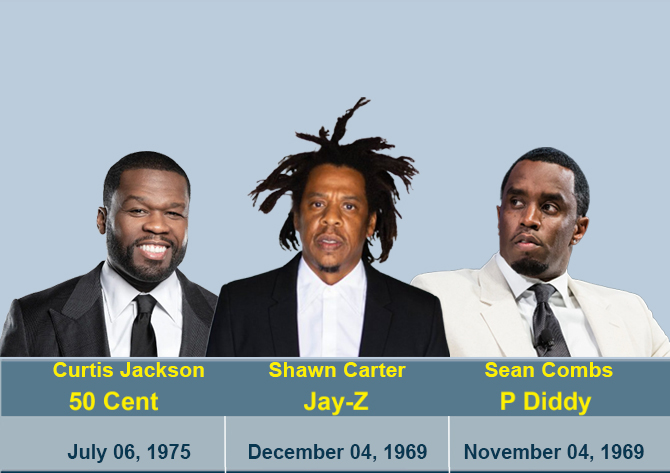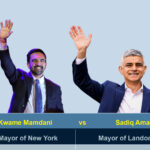A Moment of Political Shift
In one of the most talked-about races of 2025, Zohran Mamdani has emerged as the next mayor of New York City — a landmark win that signals not just a generational change, but a potential transformation of the city’s political identity. The 34-year-old, self-described democratic socialist, defeated former Governor Andrew Cuomo and Republican Curtis Sliwa, capturing just over half the vote in a turnout surge and becoming the city’s youngest mayor in more than a century.
Mamdani’s win shattered several historical ceilings: he will be the city’s first Muslim mayor, the first of South Asian heritage and the first born in Africa (Uganda) to hold the office. His campaign was rooted in addressing New York’s affordability crisis, proposing bold ideas such as free public transit, universal childcare, city-run grocery outlets, a rent freeze on stabilized apartments, and a $30 an hour minimum wage by 2030.
Why the Win Mattered
- Exit poll data show Mamdani swept younger voters and recent arrivals: 78% of those under 30 and 81% of New Yorkers living in the city less than ten years backed him.
- His campaign’s grassroots digital energy and framing of the race as a “movement for the working class” resonated deeply in a city long viewed as tilted toward elite interests. The result? More than 2 million ballots cast — the highest turnout for a New York mayoral race in decades.
- Despite facing a heavy-dollar opposition — at least 26 billionaires spent over $22 million to block his path — Mamdani prevailed.
The Early Days in Transition
On November 5th, just hours after the results were projected, Mamdani announced his incoming transition team. Set in Queens, the announcement underlined his priorities: low-income New Yorkers, social services, and carving a national voice for his city against what he called corporate power.
Meanwhile, backlash and political friction are already emerging:
- A Republican congressman introduced the “MAMDANI Act,” seeking to cut federal funds to NYC during his tenure — a political gesture, but telling of the opposition he will face.
- Former congressman George Santos announced he is leaving New York, citing Mamdani’s win and calling it “evil.”
- Business leaders, including supermarket magnate John Catsimatidis, warned of a potential “lawless society” under his administration, underlining the ideological fault lines tearing open.
What Lies Ahead & The Stakes
Mamdani will be sworn in on January 1, 2026, becoming the 111th mayor of New York City. The honeymoon will be short-lived, for several reasons:
- His agenda is ambitious, but city governance is complex. New York’s mayor works in a governance ecosystem of boroughs, state oversight and entrenched bureaucracies.
- His policies face institutional hurdles — for example, his tax proposals affecting high earners require state cooperation.
- The national political context is heated. He won against the backdrop of a Republican-dominated federal environment, threats of funding cuts, and cultural warfare over identity and values.
- On the social front, his victory has been celebrated as a shift in narrative: hundreds of New Yorkers described the result as “a collective exhale” — a sign of hope and renewal.
A Comparison with London’s Mayor, Sadiq Khan
To understand Mamdani’s place in global metropolitan politics, it’s illuminating to compare him with Sadiq Khan, the current mayor of London — one of the most prominent Muslim leaders in a major Western capital.
Parallels:
- Both men are Muslims from immigrant backgrounds who ascended to city leadership in emblematic fashion. Khan became mayor of London in 2016; Mamdani now follows in that path in NYC.
- Both have built platforms focused on affordability, social inclusion, transport and housing — key issues in large global cities.
- Each has been the target of Islamophobic and populist attacks, speaking to the cultural dimension of their leadership. Khan’s long career has seen him defend both his identity and leadership. Mamdani similarly campaigned while confronting accusations and big-money resistance.
Key Differences:
- Experience: Khan was an established Labour politician and human-rights lawyer who built his career over decades. Mamdani is younger, more politically insurgent, and represents a bold shift rather than a gradual ascent.
- Ideology: While Khan is broadly centre-left (and has had to navigate governing realities and compromise), Mamdani is unabashedly democratic socialist, promising more radical change in New York’s context.
- Governing power and context: London’s governance structure limits the mayor’s powers in some areas (e.g., schools and housing are borough/state matters). New York’s mayor also faces constraints (state legislature, city board etc.), but the public expectation for large-scale change under Mamdani is colossal. Analysts suggest Mamdani might learn from Khan the value of selecting battles carefully.
What Mamdani Can Learn from Khan:
- Move swiftly on the achievable (e.g., fare freezes, targeted rent initiatives) while being conservative about what can be realistically delivered — Khan’s successes (e.g., expanded public transit, clean air zones) show the value of early wins.
- Manage coalition-building. Khan has had to work across parties, sectors and with national government. Mamdani must navigate a toxic federal-state dynamic in the U.S., meaning his ability to collaborate will be a crucial test.
- Contain symbolism fatigue. Big wins and historic firsts (being the first Muslim mayor of NYC, etc.) bring high expectations — sustaining momentum will matter. Khan’s third term shows even established mayors face skepticism.
Why It Matters for Your Site
For whysofamous.com, Mamdani’s story offers multiple compelling themes: the rise of an insurgent progressive in one of the world’s great cities; the intersection of identity (immigrant background, Muslim faith) and power; the generational shift in urban politics; and the global resonance of metropolitan leadership (linking NYC and London).
Final Thoughts
Zohran Mamdani’s ascent marks a potentially seismic shift for New York City — not just in terms of policy, but in who gets to lead, how campaigns are run, and what voters expect from local government. The road ahead is filled with both promise and peril: delivering on bold promises won’t be easy. But if Mamdani can harness his youthful energy, mobilize his base, and manage pragmatically, he could redefine the modern urban mayor for the 21st century — much as Sadiq Khan did for London a decade ago.





